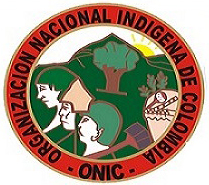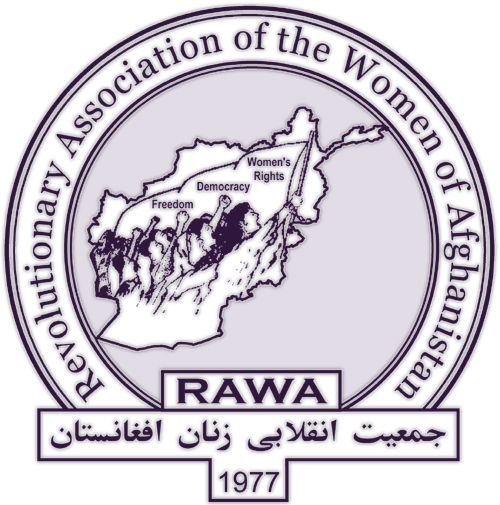Peru
Peru: police surround Conga occupation
Hundreds of campesinos on March 1 established an encampment and began building a large shelter on the shores of Laguna Azul, within the lease area of the Conga mining project, pledging to block any attempt by the Yanacocha company to bring in equipment. At nightfall, the campesinos from the provinces of Bambamarca, Celendín and Cajamarca, are holding an assembly as some 300 National Police have surrounded them. Edy Benavides, a leader of the camp and president of the Defense Front of Hualgayoc (a municipal district in Bambamarca), accused Yanacocha of lying to the people of the region in its claim to have "suspended" the Conga project. Other leaders of the encampment are Milton Sánchez, president of the Interinstitutional Platform of Celendín, and Marco Arana, leader of the political movement Tierra y Libertad. (La Republica, RPP, March 1)
Peru: mining company rejects Conga referendum
In a Feb. 13 press conference in Peru's northern city of Cajamarca, leaders of the regional Unitary Struggle Command, joined by congressional deputy Jorge Rimarachín, announced a new cross-country march on the alpine lagunas threatened by the Conga gold-mining project. Leaders said the march, to begin at month's end from local campesino communities, would culminate a few days later in an occupation of area around the lakes to secure them against any move by the Yanacocha mining company. (Celendin Libre, Feb. 23) That same day, Yanacocha issued a statement rejecting plans by impacted communities to hold a consulta or referendum on the project. Yanacocha spokesman Javier Velarde said: "If we are going to accept conultas every time there is a project that wants to be developed, and if the consultas are on the margin of the law, without the participation of the authorities, we will be placing in danger all the mineral industry at the national level." (Celendin Libre, Feb. 23)
Peru: water authority rejects mine expansion
Peru's Yanacocha mining company—that seeking to develop the controversial Conga project in Cajamarca region—is appealing a ruling of the National Water Authority (ANA) barring expansion of its existing mine into new lands within its concession area. The lands, at a place called La Quinua Sur, lie within the headwaters of the Río Grande, which supplies water to the city of Cajamarca. Technically, the expansion, dubbed Yanacocha Oeste, was approved late last year by the Ministry of Energy and Mining (MINEM), but ANA denied approval to discharge effluent into local waterways that drain into the river. This effectively bars plans to develop a new open-pit mine at Quinua Sur.
Peru: miners block Pan-American Highway
Informal miners in Peru's southern Arequipa region declared an open-ended paro (civil strike) Feb. 6, briefly blocking the Pan-American Highway at various points before being cleared by the National Police. Hundreds of miners armed with sticks gathered at several villages along the highway, erecting barricades to press thier demands for "formalization" of their mineral claims and a system of social security including a pension plan. The largest protest was in Ocoña, Camaná province, where some 2,000 marched. The srtike is being coordinated by the National Confederation of Artisenal Miners of Peru (CONAMI). (Sin Patrones, Feb. 6)
Peru: villages to hold referendum on Conga project
Villages in the area to be impacted by the controversial Conga gold mine in Peru's Cajamarca region announced last week that they will hold a referendum on the project—with the support of the regional government but not Lima. The vote will be held in Celendin and Bambamarca provinces in July, said a statement from the Cajamarca Unitary Struggle Command (CUL). "A consultation will be held on the Minas Conga project in order to see what the population thinks," said the CUL's Marco Arana. The consultation is being organized by traditional village authorities, and seems not to have been endorsed by the provincial governments. The mayor of Huasmin district in Celendín, José Eriberto Marín Agusti, is backing the referendum.
Peru: Uchuraccay massacre recalled
The Peruvian Press Association on Jan. 26 noted the 30th anniversary of the massacre of eight journalists and their local guide at the village of Uchurachay, Ayacucho department, where they themselves had been investigating reports of massacres. But a commentary in the left-leaning Lima daily El Popular decried that the violence against Uchurachay's campesinos was "more invisible." Peru's Truth and Reconciliation Commission (CVR) found that in the months around the slaying of the journalists, 135 members of the community of 470 were killed—hanged, hacked or stoned to death, their bodies thrown into canyons to be eaten by dogs. Most of the killings seem to have been ordered by village authorities in an effort to purge sympathizers of the Shining Path guerillas. (La Republica, Feb. 1; La Republica, La Republica, Jan. 29; El Comercio, Jan. 26; El Popular, Jan. 21)
Peru: new mobilization against Conga project
Jan. 12 saw a new mobilization in the northern Peruvian city of Cajamarca against the pending Conga mining project, with some 1,000 local campesinos and their supporters filling the Plaza de Armas with music, banners and slogans. Participants accused the Yanacocha mining company of "intending to privatize" the region's water resources, and of being complicit in the "criminalization of protest." Residents of the community of Baños del Inca proclaimed their readiness to occupy La Shacsa, a nearby mountain within Yanacocha's active concession area, if the Conga project moves ahead. The march was convened by Wilfredo Saavedra, leader of the Cajamarca Environmental Defense Front. (Servindi, Jan. 15)
Peru: new incident at Bagua
In an incident that remains unclear Jan. 10, a commando of the Peruvian army's 6th Jungle Brigade at El Milagro base in Amazonas region fired on local civilian residents who had been employed by the base to build a vigilance post, leaving two injured. The two were evacuated by helicopter to the nearest town—Bagua, the site of the "Amazon's Tiananmen Square Massacre," when troops fired on indigenous protesters in June 1989. (La Republica, RPP, Jan. 10) The massacre, known in Peru as the "Baguazo," remains the subject of an investigation by Peruvian judicial authorities. The Bagua office of the Fiscalía, Peru's attorney general, announced Jan. 24 that it will seek life imprisonment for indigenous leader Alberto Pizango, who is accused of firing a rifle blast at police during the incident. Also facing a life term is Joel Shimpukat, brother-in-law of congress member Eduardo Nayap. A total of 53 indigenous activists face charges in the "Baguazo." (Perú.com, AIDESEP, Jan. 24)















Recent Updates
22 hours 3 min ago
1 day 2 hours ago
1 day 18 hours ago
1 day 18 hours ago
2 days 1 hour ago
2 days 3 hours ago
2 days 18 hours ago
3 days 2 hours ago
4 days 20 hours ago
4 days 20 hours ago